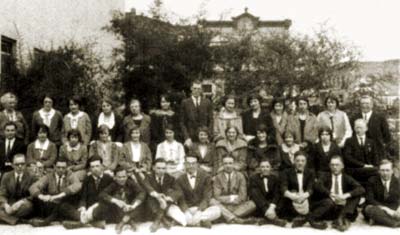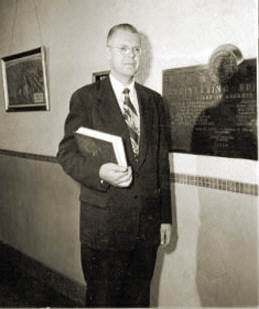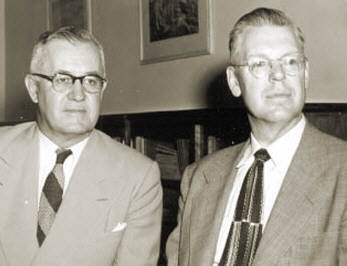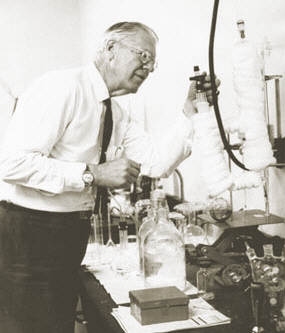Part 3: Always an Educator
A Professor for Four Decades
By Dr. Mike Ayers, Lawrence Berkeley National Laboratory
Aerogel.org Contributor
May 2000
After he received his bachelor’s degrees from Stanford in 1922, Sam Kistler spent a short time working for the Standard Oil Co. of California. While doing so, he resided on Euclid Avenue in Berkeley, a short distance from the University of California campus. He must not have been particularly happy at Standard Oil, as he quickly began a search for an academic position.
That search led him back to the College of the Pacific, a private school then located in San Jose, California, where he had spent his first three years as an undergraduate. At that time the College was in transition, having decided that they cold not compete with the other major universities in the San Francisco area, and was preparing to move the entire campus to Stockton, California. Stockton was, and essentially still is, a dusty port city in the flat, hot central valley of California. Not exactly a hotbed of academic excellence in the 1920’s.
Nevertheless, Kistler enthusiastically applied for one of the first positions on the new chemistry faculty. The correspondence between Kistler and College President Tully Knoles reveals much about the life of a college professor in the American West during the first half of the 20th century, and also Sam Kistler’s dedication and enthusiasm for teaching, his questionable feelings about moving to Stockton, and his habit of offering unsolicited advice to school administrators. Also of note is Kistler’s suggested course load for his first teaching year which did not include any chemistry courses. However, he gladly accepted the position, which was fortunate for him, as a few months after he left for Stockton the entire block on Euclid Avenue where he had been living was consumed in the “Great Berkeley Fire of 1923”.
During his years at Pacific, Kistler settled in well to the role of professor, taking a great interest in his students performance and enlightenment. He also sought to inform the general public in the ways of science, as a contemporary newspaper account reveals:
MASONIC CLUB GIVEN TALK ON ‘THE MOLECULE’
PROFESSOR KISTLER GIVES CLUBMEN EARFUL
Prof. H. S. Kistler of the College of the Pacific department of chemistry entertained the members of the High Twelve club at their meeting today in the Masonic clubrooms.
“The Molecule” was the subject of Prof. Kistler, and he made this minute organism the subject of an interesting and refreshingly humorous talk. The professor explained that a thimbleful of air contains an immense number of molecules. If each molecule in this thimbleful of air should become as large as a snowflake, there would be enough flakes to cover the United States an inch deep with snow. These molecules are moving with the speed of rifle bullets and hitting other molecules, 250,000 in every inch of travel, and yet these constant collisions do not seem to diminish the molecules’ speed. The molecular collisions were illustrated by experiments, and some of the molecules collided with such force that the explosion startled some of the staid members of the club out of their usual dignity.
Kistler remained at Pacific for several years, and in 1927 began to work toward his doctorate at Stanford during the summers when he was not teaching. He completed the necessary work in two years, and in 1930 he accepted an International Student Fellowship and spent one year in Europe, at the Kaiser Wilhelm Institute in Berlin and at the University of Gottigen.
Upon his return, he apparently had lost the “Pacific Spirit” and accepted a position as an assistant professor at the University of Illinois, where he remained until 1935.

Professor Kistler (tall fellow in the center) and the first Freshman class at Pacific, 1923. Photo courtesy UOP Holt-Atherton Special Collections.
Kistler then spent the years from 1935 to 1952 working in industry. However, academia called once again, and when offered the position of Dean of Engineering at the University of Utah, he relocated to Salt Lake City. There he continued to actively research various subjects, teach, and consult to industry until his retirement. At Utah he became a tireless advocate for the importance of science and engineering education for the students of the day. Samuel Kistler was one of the rare breed of scientists exhibiting both excellence in research and teaching.
| Photos courtesy: Special Collections, J. Willard Marriott Library, Univ. of Utah | |



